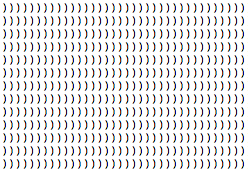TLE '17 Contest 2 P1 - Cadadr
View as PDF
Some computer science courses at the University of Fireloo teach a programming language called Bracket.
Two of the functions in Bracket are (car x) and (cdr x). These functions are used a lot, so the Bracket developers allowed programmers to "combine" multiple uses of (car x) and (cdr x) into one name.
Suppose that the function is (cijk...r x), where i,j,k,... are characters each representing either a or d. This function is equivalent to (cir (cjk...r x)), which is equivalent to (cir (cjr (ck...r x))), and so on. Note that the placement of the brackets is important. A full expansion only contains car and cdr functions.
For example, (cadadr x) can be fully expanded to become (car (cdr (car (cdr x)))).
Given a function in the form (cijk...r x), please output the full expansion.
Input Specification
The only line of input will contain a string in the form of (cijk...r x). It will contain no more than
For
Output Specification
Output a single line, the full expansion of the given function. Ensure that brackets are proper and that there is a space between the last cdr or car and the following x. Other spacing will not matter.
Sample Input 1
(cadadr x)Sample Output 1
(car (cdr (car (cdr x))))Sample Input 2
(cdadaddr x)Sample Output 2
(cdr (car (cdr (car (cdr (cdr x))))))
Comments